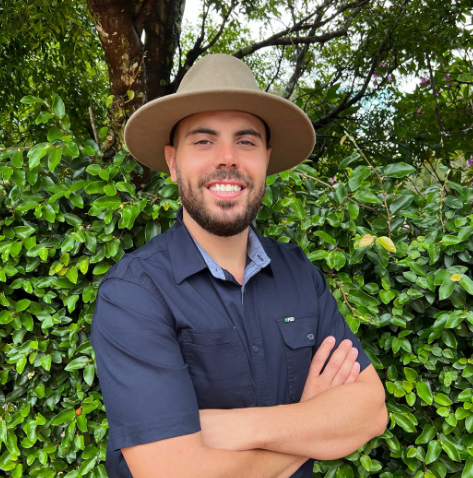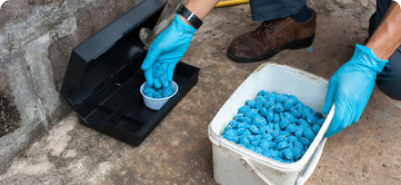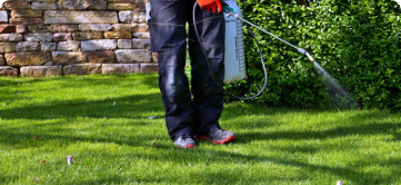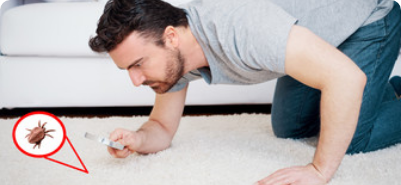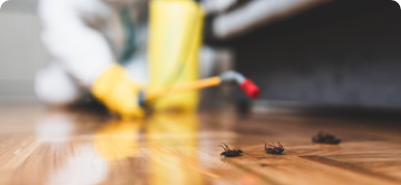What are the early signs of termites in your home?
Spotting termite activity early can save your home from extensive damage. Watch for these key warning signs:
- Mud tubes on walls and foundations serve as protected highways for termites to move between their colony and food sources. These pencil-width tunnels appear brown or dark in colour.
- Hollow timber sounds different when tapped – a clear indication of termite activity beneath the surface. Check wooden structures by gently tapping them with a screwdriver handle.
- Discarded wings around windows and doors signal recent termite swarms. These pale, translucent wings often appear in small piles and require immediate attention from pest control termite experts in Sydney.
A professional termite inspection Sydney service can confirm these signs and implement targeted treatment before significant structural damage occurs.
What are termite droppings?
Termite droppings, known as frass, are small pellet-like waste materials that signal active termite infestations in your home. These droppings appear as tiny, oval-shaped particles, typically measuring 1mm in length. The colour ranges from light brown to black, depending on the wood type termites consume.
Key characteristics of termite droppings:
- Six-sided pellet shape
- Rough, granular texture
- Clustered deposits near entry points
- Similar appearance to sawdust or coffee grounds
Early identification of these droppings enables swift implementation of professional termite treatment Sydney solutions. A comprehensive termite barrier installation creates a protective shield around your property, preventing future infestations.
Regular inspections by qualified pest controllers help detect these warning signs before extensive structural damage occurs. These experts assess dropping patterns and locations to determine the most effective termite treatment strategy for your home.
What is the difference between termite droppings and termite frass?
The terms ‘termite droppings’ and ‘termite frass’ have distinct characteristics. Termite frass refers specifically to the dry, pellet-shaped waste produced by drywood termites. These pellets appear as tiny, six-sided capsules with rounded ends, measuring about 1mm in length.
Termite droppings from subterranean species create a wet, mud-like substance used to build their tunnels. This material differs significantly from the granular frass left by drywood termites.
Key identifiers of termite frass:
- Light-coloured, hexagonal pellets
- Uniform size and shape
- Typically found in small piles
- Wood-matching colour
Professional termite control Sydney experts use these visual differences to:
- Identify the specific termite species
- Determine infestation locations
- Plan targeted termite removal strategies
- Implement appropriate treatment methods
A skilled termite inspector can distinguish genuine frass from sawdust or other wood debris, ensuring accurate diagnosis and effective treatment plans.
Are termite droppings bad for your health?
Termite droppings pose specific health risks to household occupants. These small pellets can become airborne, triggering allergic reactions and respiratory issues in sensitive individuals. Common symptoms include:
- Persistent coughing
- Nasal congestion
- Skin irritation
- Asthma flare-ups
The presence of termite droppings signals potential air quality concerns. When termites digest wood, they release microscopic particles that contaminate indoor air. These particles mix with dust and create an unhealthy living environment.
A professional termite inspection Sydney service identifies droppings before they impact your health. Regular inspections protect both your property’s structure and your family’s wellbeing. Certified inspectors assess dropping locations, determine infestation severity, and recommend appropriate home termite control measures.
Swift action prevents health complications and structural damage. Book an inspection at the first sign of termite activity to maintain a safe, healthy home environment.
What do termite droppings look like? Visual cues in a termite inspection
Termite droppings have specific features that make them easy to identify during a termite inspection Sydney assessment:
- Size: 1-2mm long pellets
- Colour: Light to dark brown, matching the wood being consumed
- Shape: Six-sided, oval-shaped granules
- Texture: Dry and hard to touch
- Location: Commonly found in neat piles below kick-out holes
These droppings create distinctive patterns when expelled from termite galleries. Fresh frass appears lighter in colour, darkening with age. During pest and termite control inspections, experts look for these telltale signs:
- Small holes in wooden structures with frass piles beneath
- Concentrated clusters near window frames and door jambs
- Sawdust-like deposits along skirting boards
- Granular accumulations in wall cavities or ceiling spaces
A trained inspector can tell the difference between termite frass and regular sawdust by looking at the uniform size and unique hexagonal shape of individual pellets.
Do termite droppings mean I need to call in the professionals?
If you find termite droppings in your home, it’s crucial to contact a professional right away. These small, cylindrical pellets are a sign that there are active termite colonies in your property, causing damage to its structure.
Why should you act fast?
- One colony of termites can eat through as much as 3kg of wood in a year
- Damage that is not visible can quickly spread through the spaces in your walls
- Most insurance policies do not cover damage caused by termites
Professional pest control services in Sydney have the tools and expertise to:
- Determine the full extent of the infestation
- Find out how the termites are getting into your home and where they have caused damage
- Develop specific treatment plans tailored to your situation
The cost of getting termite protection in Sydney is small compared to what you might have to spend on repairs. A thorough inspection by a qualified professional will help you understand how serious the problem is and what the best course of action is.
After getting rid of the existing termite colonies, trained pest controllers will set up barriers and monitoring systems to stop any future invasions.
What are some effective termite treatment options
Professional termite treatment Sydney services offer two primary defence strategies:
1. Chemical Treatments
- Liquid termiticides create protective soil barriers
- Direct wood treatments eliminate existing colonies
- Bait systems attract and destroy termite populations
- Long-lasting protection for up to 8 years
2. Physical Barriers
- Stainless steel mesh prevents termite entry
- Granite particle barriers block access points
- Metal shields installed during construction
- Chemical-free protection lasting decades
Andy’s Pest Control delivers expert termite barrier Sydney solutions tailored to your property. Our licensed technicians assess your specific situation and recommend the most effective combination of treatments to protect your home.
Contact us today for a comprehensive termite inspection and treatment plan.

